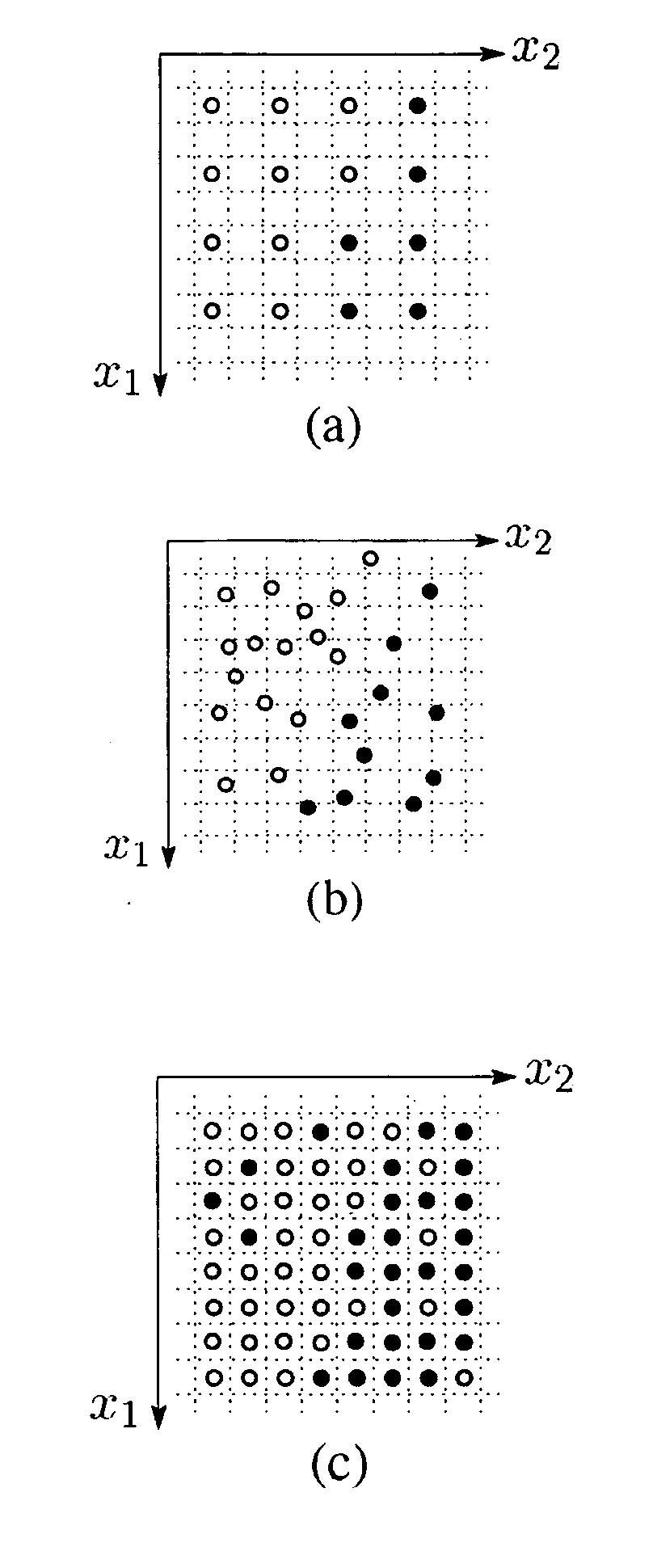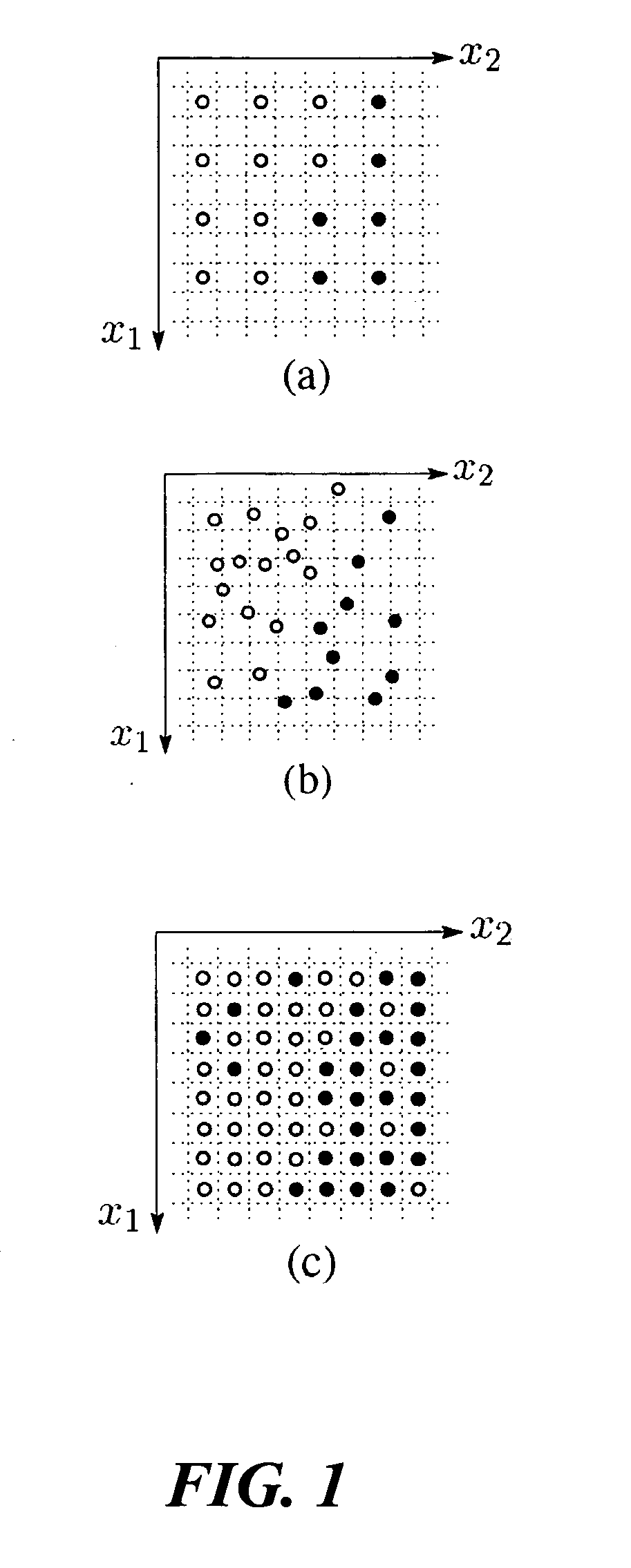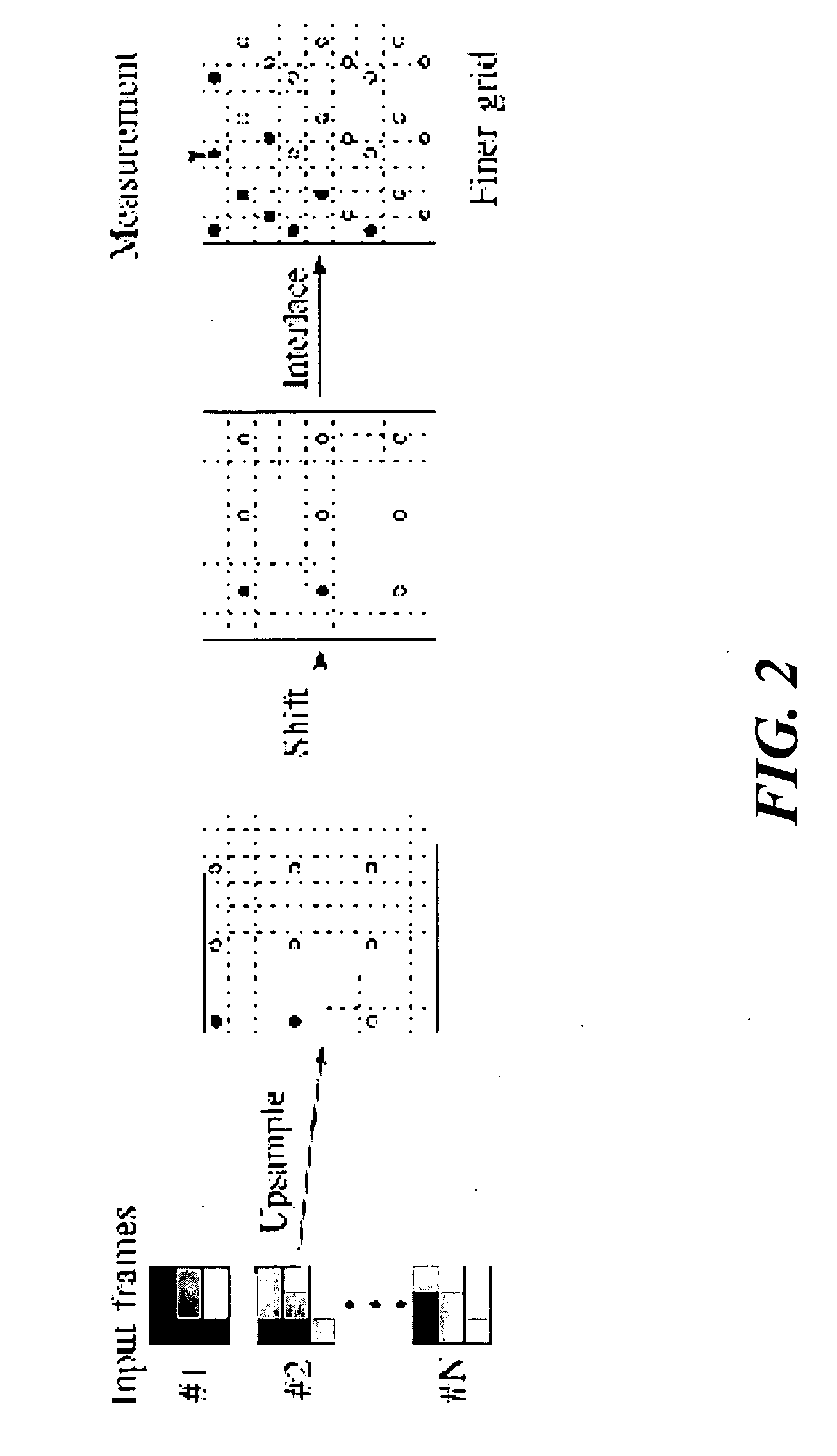Kernel regression for image processing and reconstruction
a kernel regression and image processing technology, applied in the field of image processing, can solve the problems of increased production cost, inconvenient reconstruction, and inferior spatial resolution of traditional film cameras, and achieve the effect of improving local image structure information in the reconstruction
- Summary
- Abstract
- Description
- Claims
- Application Information
AI Technical Summary
Benefits of technology
Problems solved by technology
Method used
Image
Examples
Embodiment Construction
[0034] Although the following detailed description contains many specifics for the purposes of illustration, anyone of ordinary skill in the art will readily appreciate that many variations and alterations to the following exemplary details are within the scope of the invention. Accordingly, the following preferred embodiment of the invention is set forth without any loss of generality to, and without imposing limitations upon, the claimed invention.
[0035] Regression is a tool not only for interpolation of regularly sampled frames (up-sampling) but also for restoration and enhancement of noisy and possibly irregularly sampled images. FIG. 1(a) illustrates an example of the interpolation, where an image is up-sampled by a factor of two in each direction. FIG. 1(b) illustrates an example of restoration, where an irregularly sampled noisy image is to be interpolated onto a high resolution grid. Different from in-painting applications, interpolation of irregularly sampled image data is...
PUM
 Login to View More
Login to View More Abstract
Description
Claims
Application Information
 Login to View More
Login to View More - R&D
- Intellectual Property
- Life Sciences
- Materials
- Tech Scout
- Unparalleled Data Quality
- Higher Quality Content
- 60% Fewer Hallucinations
Browse by: Latest US Patents, China's latest patents, Technical Efficacy Thesaurus, Application Domain, Technology Topic, Popular Technical Reports.
© 2025 PatSnap. All rights reserved.Legal|Privacy policy|Modern Slavery Act Transparency Statement|Sitemap|About US| Contact US: help@patsnap.com



